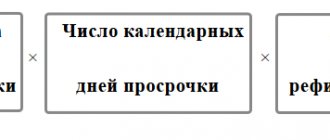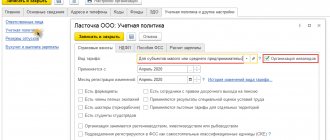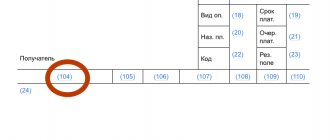- home
- Reference
- Insurance premiums
In accordance with current legislation, Russia has mandatory pension, medical and social insurance systems. Within the framework of them, citizens have the right to receive certain social guarantees, including the provision of medical care and provision of pensions.
At the same time, the financial support of these insurance systems falls on working citizens and their employers. Thus, it has been established that each organization and individual entrepreneurs are required to make insurance contributions for their employees in an amount depending on the employee’s salary. For failure to fulfill the relevant obligation, financial sanctions may be applied to employers, including fines and penalties.
It is also useful to read: Refund of overpaid insurance premiums
How to make wiring correctly
In practice, there are two most commonly used postings for penalties on insurance premiums:
- Dt 99/1 Kt 69 subaccount . This entry reflects the accrual of a certain amount of penalties on contributions for various types of compulsory insurance. It is acceptable to consider penalties as “other expenses”. In this case, wiring Dt 91 Kt 69 is used.
- Dt 69/subaccount Kt 51 . This posting implies that the funds are used to pay off the debt.
When paying off arrears, many accountants have a question about what date should be entered when making entries. In this case, it depends on how the payment is made - voluntarily or on the basis of a corresponding requirement.
If penalties are paid off independently, then indicate the date when their amount was calculated. In cases where the organization complies with the requirements of the regulatory authority, the date of its issuance is indicated.
Calculation of insurance premiums: postings
Back in 2021, the insurance coverage of citizens has undergone significant reforms. Thus, the Federal Tax Service became the single administrator of revenues. Let us recall that previously payments for insurance coverage were credited directly to extra-budgetary funds (PFRF, FFOMS, Social Insurance Fund).
We recommend reading: What benefits are available to widows of participants in the 1986 Chernobyl Treaty?
Before moving directly to the rules for compiling accounting records and reflecting deductions for social needs in accounting entries, let’s look at the key aspects regarding insurance coverage for employed citizens.
The concept of “penalties on insurance premiums”
In cases where an organization or individual entrepreneur does not fulfill its obligations to pay insurance premiums, the supervisory authority has the authority to charge additional amounts of money until the debt is paid.
So, here we should highlight penalties, which mean an additional fee established for each day of delay. A special feature of penalties is that they are accrued daily until the organization or individual entrepreneur fulfills its obligations.
Reference! Penalties should be distinguished from fines. A fine is a financial sanction in the form of forced collection of a certain amount of money in case of failure to comply with legal requirements. After the fine is issued, its amount does not increase and remains constant.
The decision to apply penalties against contribution payers is made by the supervisory authority. Previously there were several of them. Thus, pension insurance contributions were administered by the Pension Fund of Russia (PFR), medical contributions by the Compulsory Medical Insurance Fund (MHIF), and social contributions by the Social Insurance Fund (FSS).
However, today the functions of administering incoming contributions are assigned to the Federal Tax Service (FTS) .
It is this body that imposes financial sanctions on unscrupulous payers. Contributions for injuries are still administered by the Social Insurance Fund.
Accrual procedure
For late submission of reports or submission of accounting information, for example, when opening a current account, or payment of taxes later than the due date, penalties are imposed, the amount of which is regulated by the relevant articles of the Tax Code.
A penalty is something other than penalties. It is a kind of security that encourages the timely fulfillment of their obligations regarding the payment of relevant taxes and fees.
The amount of the accrued penalty is regulated by Article 75 of the Tax Code of Russia, which states that it is accrued from the day following the payment deadline and ends on the day the arrears are repaid.
According to this article of the Tax Code, the amount of the penalty depends on three parameters:
- Overdue amount;
- Number of days overdue;
- From the refinancing interest rate of the Central Bank of Russia.
To display the accrued penalty, it is recommended to use account 99, which allows you to avoid a permanent tax liability, since when generating an income tax return, the accrued penalty on insurance premiums is not included in the calculation of the tax base. It is recommended to consolidate the use of account 99 in the accounting policy of the enterprise.
| Account Dt | Kt account | Transaction amount, rub. | Wiring Description | A document base |
| 20 (25, 26, 29, 44) | 69-2 | 10 000,00 | Insurance premiums paid to the Pension Fund | Payroll |
| 20 (25, 26, 29, 44) | 69-1 | 2 000,00 | Contributions to the Social Insurance Fund have been accrued | Payroll |
| 20 (25, 26, 29, 44) | 69-3 | 3 000,00 | Contributions to the Compulsory Medical Insurance Fund have been accrued | Payroll |
| 69-2 | 51 | 10 000,00 | Payment of insurance premiums to the Pension Fund | Bank statement |
| 91 (99) | 69-1,69-3 | 3,67 | Postings for calculating penalties for late insurance premiums. Overdue period – 2 days; Overdue amount – RUB 5,000.00; Refinancing rate – 11%. P = 5,000.00 * 2 days. * 11% * 1/300 = 3.67 rub. | Accounting information |
| 69-1, 69-3 | 51 | 5 000,00 | Payment of debt on insurance contributions to the Social Insurance Fund and the Compulsory Medical Insurance Fund | Payment order |
| 69-1, 69-3 | 51 | 3,67 | The accrued penalty was paid to the budget | Accounting certificate, payment order |
| 99-2 | 68-4 (68-2, 68-1) | 475,17 | A penalty was accrued for non-payment of tax in the amount of RUB 78,540.00. The delay was 22 days. Refinancing rate – 8.25%.P = 78540 * 22 days. * 8.25% * 1/300 = 475.17 | Accounting information |
| 68-4 (68-2, 68-1) | 51 | 78 540,00 | The amount of tax debt has been paid | Payment order |
| 68-4 (68-2, 68-1) | 51 | 475,17 | The accrued penalty was paid to the budget | Payment order |
Due to failure to pay tax and other payments on time, the relevant authorities - the tax inspectorate, pension fund, social insurance fund - will charge penalties - a kind of fine for failure to meet deadlines for each day of delay in payment.
Penalty is a term that has approximately the same meaning as interest on loans in a banking institution. But compared to any bank, penalties have a government background, expressed in their calculation using the refinancing rate. The amount of the penalty is 1/300 of the refinancing rate for each day, starting from the day following the last day of voluntary payment.
- for pension insurance - within the limit of 22%, above the limit of 10%;
- for health insurance - 5.1%;
- for social insurance - within the limit of 2.9%, above the limit 0%;
- for accident insurance - from 0.2 to 8.5%; For disabled people, only 60% of the calculated insurance premiums is taken.
- In this case, a credit balance is usually formed on the account, which shows how much insurance premiums the organization is obliged to transfer.
- There is also a debit balance when the company has transferred an excess amount of contributions or government agencies have a debt to the company.
The amount of accrued tax sanctions does not form a conditional income tax expense (clause 83 of the Accounting and Reporting Regulations, clause 20 of PBU 18/02). Therefore, in accounting, reflect these amounts directly on account 99 “Profits and losses” in correspondence with account 68 “Calculations for taxes and fees” (69 “Calculations for social insurance and security”).
For accounting purposes, fines and penalties can be combined into one category of accounting objects - tax sanctions.* This approach does not contradict the objectives of accounting, in particular, providing complete and reliable information about the activities of the organization and the basic principles of its management - rationality and the priority of content over form (clause. 1 Article 13 of the Law of December 6, 2011 No. 402-FZ, clause 10 of the Regulations on accounting and reporting).
Each of the taxes existing for a legal entity must be paid on time. Consequently, it does not matter for what type of payment the tax penalty was accrued. The postings are identical. Each day of delay in any of the obligatory contributions to the budget is punished equally strictly.
Accounting recognizes penalties as another expense, which in no way participates in determining the tax base when calculating income tax. Clause 83 of the PBU and the Instructions for the use of the standard chart of accounts make it possible to verify that obligations of this kind should really be reflected in account 99.
We invite you to read: Contributions for social needs: posting
If the facts of accrual and payment of penalties occur, then an explanatory note is drawn up attached to the report in Form No. 2 “Profit and Loss Statement”, where these indicators are deciphered. This issue is especially relevant if the penalty is large enough.
- the bulk of contributions (for compulsory health insurance, compulsory medical insurance, compulsory health insurance for disability and maternity) began to be subject to the Tax Code of the Russian Federation and the requirements that apply to tax payments;
- contributions for injuries remained under the provisions of the Law “On Compulsory Social Insurance...” dated July 24, 1998 No. 125-FZ.
An individual entrepreneur transfers money from a business account to a personal one: whether to pay personal income tax For personal income tax purposes, the date of actual receipt of cash income is the day of its payment, including the transfer of money to a bank account. Does this mean that an individual entrepreneur on an OSN must accrue personal income tax both when receiving money from a counterparty to his business account, and when transferring amounts from a “working” account to his personal one? For calculations of insurance premiums in the Chart of Accounts (approved.
Legislators have developed a system of control measures for the timely payment of taxes and insurance contributions. Since 2021, collection of the bulk of insurance premiums (except for injuries) has become the prerogative of the Federal Tax Service. But the requirements for their payment have remained unchanged: they must be paid on time and in full, and in the absence of payment or part thereof, the payer is subject to the rules of legislative law that dictate the mandatory payment of arrears and penalties, which are considered as penalties for late payment of contributions .
This publication will tell you how to correctly account for the accrual and payment of penalties in a company’s accounting records.
Insurance premiums are payments of an individual compensation nature that are transferred to extra-budgetary funds in order to ensure the right of citizens to pensions and benefits. Simply put, these are amounts paid by employers for the benefit of their employees. Tariff rates for calculation are determined by the law “On insurance contributions to the Pension Fund, Social Insurance Fund, Compulsory Medical Insurance Fund” dated July 24, 2009 No. 212-FZ.
Insurance amounts are transferred as mandatory monthly payments. The law determines the date before which money must be sent - the 15th day of the month following the reporting month. If this day is a weekend, then the end of the payment period is considered to be the next working day.
Mandatory amounts must be transferred by the employer on time and in full. If the established procedure is violated, government bodies may collect arrears and penalties from the company.
Unlike the accounting of non-profit organizations, in which calculated and paid fees are reflected in one accounting account, in the accounting of budgetary organizations, to reflect transactions (for example, insurance premiums are charged), entries are made on other accounts.
Let's look at the key rules of accrual and payment using an example. GBOU DOD DYUSSHOR "ALLUR" accrued wages for May in the amount of 1,200,000 rubles. To calculate SV, standard rates are used: for compulsory pension insurance (pension provision) - 22%, compulsory medical insurance (medical insurance) - 5.1%, VNIM (social insurance) - 2.9%, for injuries - 0.2%.
| Operation | Debit | Credit | Sum |
| Salary accrued | 0 401 20 211 0 109 XX 211 | 0 302 11 730 | 1 200 000 |
| Public pension insurance contributions accrued | 0 401 20 213 0 109 XX 213 | 0 303 10 730 | 264 000 (1 200 000 × 22 %) |
| Compulsory medical insurance accrual reflected | 0 303 07 730 | 61 200 (1 200 000 × 5,1 %) | |
| The accountant reflected accrued contributions for VNiM | 0 303 02 730 | 34 800 (1 200 000 × 2,9 %) | |
| Injuries | 0 303 06 730 | 2400 (1 200 000 × 0,2 %) | |
| CBs were transferred from the current account | 0 303 10 830 0 303 07 830 0 303 02 830 0 303 06 830 | 0 201 11 610 | 264 000 61 200 34 800 2400 |
When calculating SV under civil contracts in accounting records, use KOSGU for the main calculation of wages. For example, when paying an employee for building maintenance services, use KOSGU 225. Consequently, the entry for calculating remuneration for labor: Dt 0 401 20 225 Kt 0 302 25 730. Entries for accruing SV in this case: Dt 0 401 20 225 Kt 0 303 XX 730.
| Operation | Debit | Credit |
| Funds have been credited to the bank account | 0 201 11 510 | 0 303 XX 730 |
Through insurance against accidents and occupational diseases, employees will be paid insurance premiums and guaranteed payments in the event of an accident or injury at work. The accounting entries for payment of the insurance premium will be the same; read more about this in the article “How is a work-related injury paid in 2021”.
What can they charge for?
Payment of insurance premiums is carried out at intervals established by law. Accordingly, the payer is given a certain period of time to fulfill this obligation. If the obligation is not fulfilled by the end of the payment period, then financial sanctions may await him.
When insurance premiums are accrued, they are considered paid in full on the day when the corresponding payment document is provided to the bank where the current account is opened, in which there is a sufficient amount of funds.
Thus, penalties may be assessed:
- for non-payment of insurance premiums;
- for partial non-payment of insurance premiums;
- for late payment of fees.
The decision to accrue penalties and fines on insurance premiums can be challenged in court.
Calculation of penalties for taxes: accounting entries
| ★ Best-selling book “Accounting from Scratch” for dummies (understand how to do accounting in 72 hours) purchased by {amp}gt; 8000 books |
We suggest you read: Child insurance for sports section: insure children for sports online
Refusal to transfer funds is fraught with punishment - penalties and fines established by regulatory authorities. Amounts are calculated based on the length of the period of non-payment. A penalty is charged for each day of delay, starting from the end date of the permitted period.
The day the debt is transferred is not taken into account in the non-payment period used to calculate the amount of the fine. According to Law No. 212-FZ, the obligation is considered fulfilled:
- from the moment a transaction related to the transfer of money to the relevant authorities is reflected in the enterprise’s account;
- from the date of presentation to the bank of a properly executed payment order;
- from the date of the supervisory authority’s decision to set off previously overpaid amounts;
- from the moment of depositing cash into the bank's cash desk, the administration to repay the debt to the relevant fund.
That is, if an organization transfers money for March 2016 on April 18, the accounting service should send to extra-budgetary funds an amount equal to mandatory contributions increased by the amount of the penalty. In this case, the amount of sanctions will be calculated taking into account 2 days of delay - April 16 and 17.
Insurance premiums are calculated monthly. Postings are created in the period to which the calculated amounts relate.
Accruals are displayed on account 69. Organizations must ensure analytical accounting of funds; for this purpose, appropriate sub-accounts are opened.
Typical accounting entries are provided in the table below.
| the name of the operation | Debit | Credit |
| Insurance premiums paid to the Pension Fund | 20 (25, 26, 29, 44) | 69.2 |
| Accrued for payment to the Social Insurance Fund | 20 (25, 26, 29, 44) | 69.1 |
| Accrued to the Compulsory Medical Insurance Fund | 20 (25, 26, 29, 44) | 69.3 |
| Late fee charged | 91 | 69 |
| The established amounts were transferred to the funds | 69 | 51 |
Ander LLC transferred insurance premiums for March 2021 on April 19. What amount should be paid if the debt is 10 thousand rubles?
The calculation for this situation will look like this:
- It is necessary to determine all unknown indicators of the formula:
- The refinancing rate from January 1, 2021 is 11%;
- The non-payment period is 3 days: April 16, 17 and 18.
- Calculation using the formula: P = S*D*SR*1/300 = 10000*3*11*1/300 = 1100 rub.
- Preparation of postings:
- Contributions in the amount of 10 thousand rubles have been accrued: debit 20, credit 69;
- A penalty of 1,100 rubles was assessed. for overdue: debit 91, credit 69;
- The debt on contributions is listed: debit 69, credit 51;
- Penalty paid: debit 69, credit 51.
We also recommend that you read the article: “Penalties on insurance premiums.”
Silfida LLC assessed mandatory payments in the amount of 15 thousand rubles. Of these, 10 thousand rubles. were transferred on April 13, and on the 5th - on the 18th.
P = S*D*SR*1/300 = 5000*2*11*1/300 = 366.67 rub.
Postings for the operation:
- Contributions in the amount of 15 thousand rubles were accrued: debit 20, credit 69;
- Paid 10 thousand rubles: debit 69, credit 51;
- A penalty was accrued for late payment in the amount of 366.67 rubles: debit 91, credit 69;
- The debt on contributions in the amount of 5 thousand rubles was transferred: debit 69 credit 51;
- Penalty paid: debit 69, credit 51.
Use the insurance premium penalty calculator in Excel.
Payments for VNIM (compulsory insurance in case of temporary disability and in connection with maternity), compulsory pension insurance, compulsory medical insurance) are paid according to the details of the Federal Tax Service, each indicating its own BCC. The payment deadlines for all these payments are the same for payers making payments to individuals. For example, in 2021:
- for January - 02/15/2018;
- for February - 03/15/2018;
- for March - 04/16/2018;
- for April - 05/15/2018;
- for May - 06/15/2018;
- for June - 07/16/2018;
- for July - 08/15/2018;
- for August - 09/17/2018;
- for September - 10/15/2018;
- for October - November 15, 2018;
- for November - December 17, 2018;
- for December - 01/15/2019.
For payers who do not make payments to individuals, payment deadlines are different:
- until December 31 of the reporting year - from the amount of income up to 300,000 rubles;
- until 01.07 of the year following the reporting year, from an amount of income exceeding 300,000 rubles.
For 2021, the maximum base is (clause 1 of Resolution No. 1378 dated November 15, 2017):
- for OPS - 1,021,000 rubles If this limit is exceeded by payers at a reduced rate, such payers do not charge contributions in excess of the established limit. If the limit is exceeded by payers at the basic tariff, deductions for each employee in the part exceeding the limit are calculated according to the formula:
- at VNiM - 815,000 rubles. No accruals are made to the base above this amount.
The procedure for reflecting accruals and paying deductions in accounting:
- Dt 20, 26, 44 Kt 69 - insurance premiums accrued (posting);
- Dt 69 Kt 51 - insurance premiums (postings) have been paid.
Entrepreneurs who do not make payments to individuals pay:
- fixed payment, its size does not depend on the amount of income. For 2020, its amount is 32,385 rubles, including contributions to compulsory pension insurance in the amount of 26,545 rubles. and for compulsory medical insurance in the amount of 5840 rubles;
- additional deductions in the amount of 1% on income over 300,000 rubles, the maximum amount of which for 2021 is 185,815 rubles.
We suggest you read: Frequency of technical inspection
Accordingly, the maximum amount of payments for OPS for individual entrepreneurs “for themselves” for 2021 will be 212,360 rubles.
Tax control activities (camera settlements and on-site audits) from 2021 are carried out by tax authorities.
The correctness of the accrual of payments at the expense of the Social Insurance Fund is still checked by the Social Insurance Fund.
For late payments to OPS, OMS and VNiM, penalties are accrued in accordance with the general procedure established by paragraphs. 3, 7 tbsp. 75 Tax Code of the Russian Federation:
- for the first 30 days of delay for each day in the amount of 1/300 of the refinancing rate;
- starting from the 31st day of delay - in the amount of 1/150 of the refinancing rate.
For deductions for injuries, penalties are calculated differently: in the amount of 1/300 of the refinancing rate per day for the entire period of delay (clauses 3, 6 of Article 26.11 of Law No. 125-FZ).
Penalties accrued for insurance premiums (posting): Dt 99 Kt 69.
Penalties paid on insurance premiums (postings): Dt 69 Kt 51.
For the convenience of monitoring accrued penalties to account 69, it is advisable to open separate “penalty” subaccounts in the context of the insurance premiums for which they are accrued.
| ★ Best-selling book “Accounting from Scratch” for dummies (understand how to do accounting in 72 hours) purchased by {amp}gt; 8000 books |
How is the fine calculated?
As noted earlier, penalties are accrued every day for the entire period of delay. The following formula is used for calculation:
Amount of obligations*Days of delay*1/300 of the key rate
However, it should be noted that it applies only to individual entrepreneurs, as well as to organizations with a period of delay of no more than 30 days. If the delay is 31 days or more, penalties are calculated with a modified variable - not 1/300, but 1/150 of the Central Bank key rate.
As of today, the key rate of the Central Bank of the Russian Federation is set at 4.25% . However, it should be taken into account that this parameter is subject to constant change. In addition, the calculation for each calendar day is made taking into account the rate set for it.
It is also useful to read: Amnesty on insurance premiums for individual entrepreneurs
How to calculate the amount
Tax officials calculate sanctions for late payments as 1/300 of the refinancing rate for each day of delay (clause 4 of article 75 of the Tax Code of the Russian Federation).
IMPORTANT!
If an organization is overdue for a monthly payment by 1 calendar day, then no sanctions should follow. Tax inspectors assess penalties from the day following the payment deadline, taking into account that the payment day is not a settlement day (letter of the Ministry of Finance of the Russian Federation dated July 5, 2016 No. 03-02-07/39318).
Here's how to calculate penalties for insurance contributions to the Pension Fund and the Social Insurance Fund using the formula:
P = S × D × SR × 1/300,
Where:
- P - penalty;
- C - the amount of deductions payable;
- D - calendar days of delay;
- CP is the key refinancing rate.
Collection and what happens if you don’t pay on time
If penalties arise, it is recommended to pay them off as soon as possible. This is not least due to the fact that debt increases every calendar day. And after 30 days from the date of delay, sanctions for legal entities increase by 2 times.
If you do not pay the penalty on time, the tax service will send a demand for payment of arrears within 3 months. During this time, the amount of overdue payments may increase significantly. The request will indicate a deadline by which penalties must be paid in full.
If the requirement is not fulfilled by the payer of insurance premiums, then in this case the funds may be forcibly collected from him at the expense of funds in the account at the service bank.
In addition, the tax inspectorate has the right to file a lawsuit to collect the arrears. As a rule, the regulatory authority also applies to the court for the collection of unpaid insurance premiums, fines, taxes and penalties. After receiving a court order (writ of execution), debt collection is carried out forcibly within the framework of the relevant enforcement proceedings.
How to calculate overpayment for penalties and insurance premiums in transactions
Exactly how these actions occur is stated in the accounting policy for tax purposes. However, the very fact of accrual of income tax and its subsequent payment are reflected in accounting.
Let's look at the legal grounds that are relevant in 2021. All payers of insurance premiums must fulfill their obligations to pay calculated amounts for the necessary types of insurance, submit reports to the authorized bodies and maintain records.
25 Jul 2021 jurist7sib 80
Share this post
- Related Posts
- How much does the Hero of Russia get paid monthly?
- How to find out the owner of a house by cadastral number
- Is it possible to return an item in Korea the next day?
- Bailiffs Find out debt by last name Krasnodar Territory








